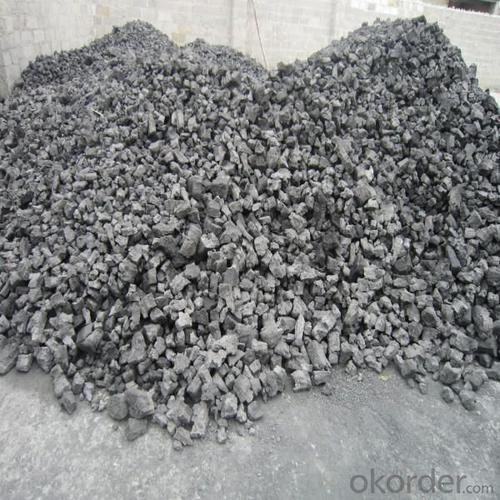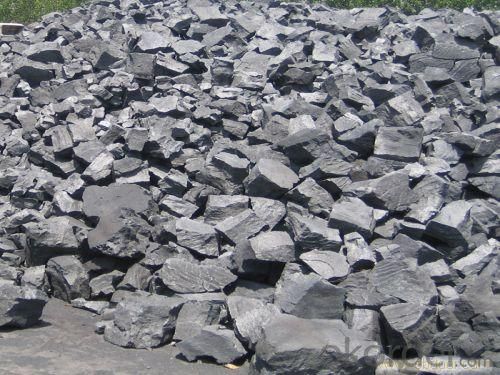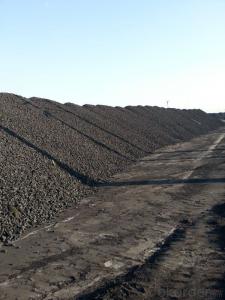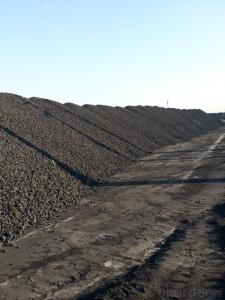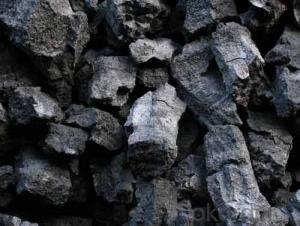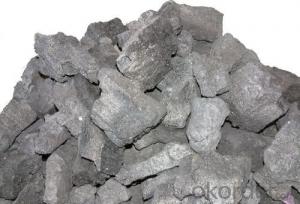Metallurgical Coke of Coke Strength after Reactivity 62
- Loading Port:
- Tianjin
- Payment Terms:
- TT OR LC
- Min Order Qty:
- 100 m.t.
- Supply Capability:
- 3000 m.t./month
OKorder Service Pledge
OKorder Financial Service
You Might Also Like
1. Structure of Metallurgical Coke of Coke Strength after Reactivity 62 Description:
Coke is made by high temperature metallurgical coke for blast furnace smelting, casting and gasification. Occurring in the process of coking after recovery and purification of coke oven gas is a high calorific value of fuel, is an important industrial raw material in organic synthesis.
Coke is mainly used for blast furnace ironmaking and used for copper, lead, zinc, titanium, antimony, mercury and other non-ferrous metal smelting of blast furnace, reducing agent, compound and the function of stock column frame.
Blast furnace with Coke instead of charcoal, which laid a foundation for the large-scale of modern blast furnace, is a major milestone in the history of metallurgy.
2. Main Features of the Metallurgical Coke of Coke Strength after Reactivity 62:
• Quality assurance
• Mutual benefit
• Preferential price
• Various choice
3. Metallurgical Coke of Coke Strength after Reactivity 62 Images:
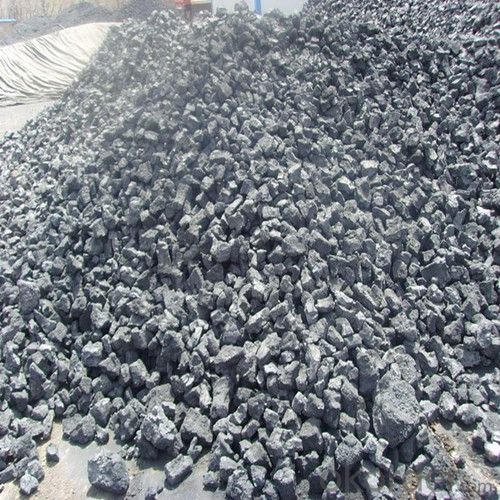



4. Metallurgical Coke of Coke Strength after Reactivity 62 Specification:
Parameters | Guarantee | Rejection |
Total Moisture ( As received basis ) | 5% max | |
Ash ( dry basis ) | 12.5% max | > 13.5% |
Volatile Matter (dry basis ) | 1.5% max | > 1.8% |
Sulphur ( dry basis ) | 0.65% max | > 0.75% |
Phosphorus ( dry basis ) | 0.035% max | > 0.045% |
M10 | 8% max | > 10% |
M40 | 82% min | <80% |
CSR | 62% min | <60% |
CRI | 28% max | > 30% |
Size 30-80 mm | 90% min | |
+80 mm | 5% max | > 8% |
-30mm | 5% max | >8% |
5. FAQ
We have organized several common questions for our clients,may help you sincerely:
1) How to guarantee the quality of the products?
We have established the international advanced quality management system,every link from raw material to final product we have strict quality test;We resolutely put an end to unqualified products flowing into the market. At the same time, we will provide necessary follow-up service assurance.
2) What are coke's main physical properties?
The average heat capacity is 0.808 kj/(KGK) (100 ℃), 1.465 kj/(KGK) (1000 ℃)
Thermal conductivity is 2.64 kj/(MHK) (room temperature), 6.91 kj/(MHK) (900 ℃);
Ignition temperature (air) is 450-650 ℃.
3) How about your company?
Our company began to export coke when China cancelled 40% of coke export tariffs and quotas on January 1, 2013. We export many kinds of coke, such as CSR60 % and CSR 62% metallurgical coke (met coke), the NUT coke of 20 to 50 mm, coke breeze of 3 to 6 mm, and so on.
- Q: What is the density of coke?
- There is also a parameter is also available for your reference: coke porosity of 35% ~ 55%The above parameter is a general range, according to the need to choose to determine.
- Q: What is the difference between metallurgical coke and chemical coke
- The chemical composition of coke including fixed carbon, ash, sulfur, volatile matter and moisture. Except moisture, other ingredients in dry coke, is an important raw material of cupola smelting, casting of the components of specific inspection requirements.
- Q: What is the reasonable standard of volatile content of coke
- Generally speaking, the volatile content of coke is about 1.5 or so, but not more than 2
- Q: What chemical plant used to coke
- . Coke obtained from high temperature coking for blast furnace smelting, casting and gasification. Coke oven gas produced in the process of coking and recovery is not only a high calorific value of fuel, but also an important industrial raw material for organic synthesis. Coke is mainly used in blast furnace ironmaking and smelting of non-ferrous metals such as copper, lead, zinc, titanium, antimony, mercury and so on. The use of coke instead of charcoal in the blast furnace has laid the foundation for the large-scale development of modern blast furnaces and is a major milestone in the history of metallurgy
- Q: Why does Coke provide heat when it is fired, it reacts only at high temperatures and why it is needed to provide heat?Which is the exothermic reaction, carbon dioxide or carbon monoxide?
- In addition to the reaction of iron and iron oxide will react C+O2=CO2; reaction exothermic;
- Q: Who knows the proportion of pig iron and coke used in Cupola
- There are doubts: blank parts output is too low.3, blank export rate: raw materials into melting after the formation of blank, under normal circumstances, the common casting investment for every 1 tons of pig iron, scrap steel and other major raw materials, the lowest to 85% iron, after casting output blanks, nozzle, nozzle, riser, riser for iron smelting water ratio of about 30%; blank standard export rate, nozzle, riser re melted continue after put into use; production enterprises invested 1 tons per dryer, iron scrap and other major raw materials to the lowest 85% of the hot metal, roughly the same with ordinary casting, casting blank after the (standard yield) for hot metal ratio is about 70%, water riser for hot metal ratio is about 15%, and the same outlet riser re melted after continued use.
- Q: I don't understand. With coke, then the rest of the coke, they are selling it?
- If most of the solid fuel is burning coal, but coking coal, which is very strong viscosity of coal is not good, it is very interesting to use the individual plant with it, the purpose is to change the fuel characteristics.Coking coal and coke, commonly used in metallurgical industry.Coal will be heated to a process of coke, but you really want to get coke, to specialized production. Power plants do not produce coke, they only have gray coke
- Q: The chemical composition of coke m10.m25 refers to?
- M10 refers to the wear resistance of coke, M25 refers to the crushing strength is the mechanical strength. Mainly the cold strength of coke. Coke is also the most important indicator is the hot state, CRI thermal reaction and CSR reaction intensity. In blast furnace production, both cold and thermal strength are important.
- Q: Coke in the whole process of steelmaking in the end is what to do, just to provide heat or carbon and other substances into steel or iron?In the study of coal classification inside, one is divided into coking coal, coking coal and coke as main, and then you see is steel or iron coke must material. What is not clear. In the end, out of coal mining is mainly used to burn energy extraction, or said that coal like oil can be converted into other products, which is a coke can convert?
- Coke is not used for blast furnace ironmakingThe use of blast furnace burden include iron ore (natural ore, sinter and pellets), solvent (limestone or dolomite), and coke, charge from top order batch into the furnace. Coke in the blast furnace ironmaking can be summarized as follows:(1) provide the heat: coke in the coke oven in front of the raceway in the intense combustion, combustion heat generated in the blast furnace smelting process is the main heat source(2) reduction: high temperature gas generated in coke combustion in the raceway, passed to the material in the process of heat rising, the endothermic reaction and coke formation, CO and H2, then CO and iron oxide in iron ore reduction reaction is transformed into metallic iron.
- Q: What is coke and how is coke classified?
- Types of cokeCoke is usually divided by use of metallurgical coke (including blast furnace coke, coke and iron alloy coke, calcium carbide and coke gasification etc.) with coke. The pressurized pulverized coal forming coal, coke carbonization etc. in the new postprocessing process called Formcoke.
Send your message to us
Metallurgical Coke of Coke Strength after Reactivity 62
- Loading Port:
- Tianjin
- Payment Terms:
- TT OR LC
- Min Order Qty:
- 100 m.t.
- Supply Capability:
- 3000 m.t./month
OKorder Service Pledge
OKorder Financial Service
Similar products
Hot products
Hot Searches




